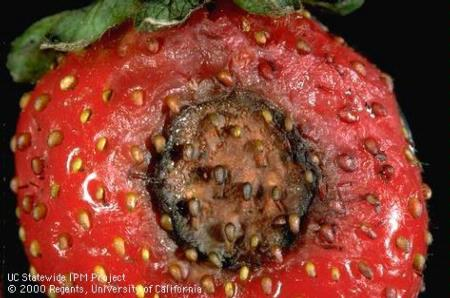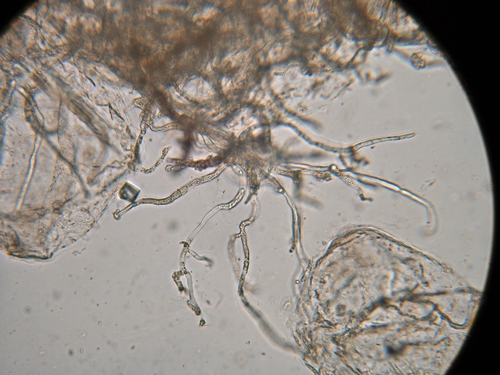Posts Tagged: Colletotrichum acutatum
Is Anthracnose a Concern on Strawberry in Fall 2015?
To address the current concern of anthracnose in strawberry for the upcoming 2015-2016 season, Ed Show, Steve Koike and I put together a video featuring a discussion of the issue. It's good to talk about it because it's not a cut and dry case.
For example, out of dozens of suspect samples for anthracnose recently submitted to Steve's UCCE Diagnostic Lab in Salinas, only one has turned up positive for the causal pathogen Colletotrichum acutatum. On the other hand, this winter is supposed to be warm and wet, which could favor the disease if it is around.
The discussion taped here with Steve and I is intended to shed more light on the current situation and help people make a good decision in a timely manner.
Great videography and editing by Ed Show. Really great work.
https://www.youtube.com/watch?v=u2N7Yrm06iY

What do the experts really think about the situation of anthracnose on strawberry this fall?
Spring Rains Bring on Phytophthora Rot of Strawberry Fruit in Watsonville and Salinas
Mark Bolda and Steven Koike, UC Cooperative Extension
The recent spate of rainy weather in the Watsonville-Salinas strawberry production district has created ideal conditions for fruit rot caused by Phytophthora. Significant fruit loss is being observed in some fields, and indeed several samples were recently brought to the UCCE diagnostic lab in Salinas and tested positive for Phytophthora.
Phytophthora rot of fruit, known as leather rot, can affect immature green or pink fruit (photo 1) as well as fully ripened red fruit (photos 2 and 3). Symptoms consist of off-white, gray, or yellow-brown lesions. Lesions often begin as localized, circular to oval shaped infection areas that later enlarge into irregularly shaped patches that can affect much of the fruit. The infected area is very soft to the touch. Fruiting bodies or other fungal structures are not seen externally on these lesions. Upon examining internal fruit tissues with a microscope, the diagnostic appearance of the mycelium (relatively thick hyphae that lack cell cross walls) can be observed (photo 4). Phytophthora cactorum is the primary species causing this fruit rot; this same pathogen can also cause crown rot disease.
Growers and PCAs should be reminded that anthracnose fruit rot, caused by Colletotrichum acutatum, may appear similar to Phytophthora infections. However, anthracnose fruit lesions are sunken, oval to round, firm in texture, and brown to dark brown in color (photo 5). In advanced stages and under suitably wet conditions, anthracnose lesions may show white mycelium and salmon to orange colored spore masses of the fungus.

Photo 1- Courtesy Steven Koike UCCE

Photo 2- Courtesy Steven Koike UCCE

Photo 3- Courtesy Steven Koike UCCE

Photo 4- Courtesy Steven Koike UCCE

Photo 5- Courtesy Steven Koike UCCE

